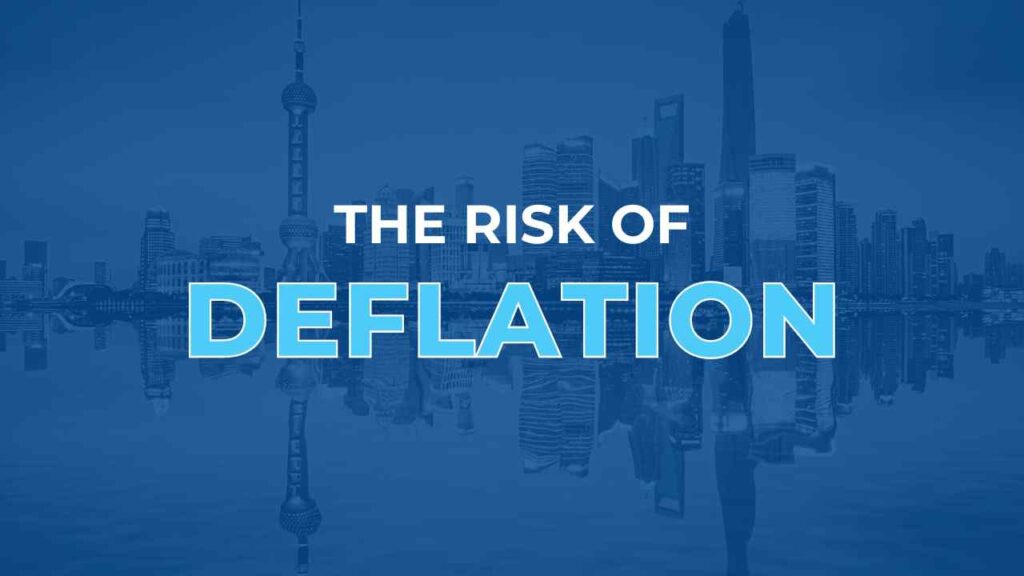In recent times, more concerns about possible deflation are rising. Given the delicate nature of the world economy, analysts often consider deflation as one of the precursor signals of an economic downturn.
Understanding Deflationary Pressures: A Look at Deflation – Causes and Effects
Deflationary pressures refer to the economic factors that create the potential for a decrease in the general price levels of goods and services. A combination of increased production efficiency, decreased demand due to demographic changes, and technological advancements contribute significantly to the onset of deflation. The effects of deflation can be detrimental, causing a decline in business profits, an increase in real debt burden, and decreased consumer spending.
The Risks: Inflation VS Deflation, Weighing the Monetary Policy Impact and Consumer Spending Decline
Both inflation and deflation are adverse economic phenomena, with contrasting risks and implications. Inflation risks involve the erosion of purchasing power leading to an increase in the cost of living, whereas deflation threats include consumer spending decline and capital investment reductions. These fluctuations can significantly impact monetary policy decision-making processes.
Analyzing Central Bank Response to Deflationary Environment: Strategies and Outcomes
The central bank response to a deflationary environment primarily revolves around adopting loose monetary policies. This includes decreasing interest rates and implementing quantitative easing measures – essentially pumping money into the economy, among other strategies. However, these measures’ efficacy in reversing deflation largely depends on macroeconomic conditions and other factors.
Fiscal Stimulus Measures Against Economic Uncertainty: Their Role in Countering Deflation
During conditions of economic uncertainty, fiscal stimulus measures can play a crucial role in countering deflation. These measures are designed to encourage consumer spending and business investment, thereby boosting economic activity and warding off deflationary pressures.
Unraveling the Impact of Deflation on Businesses: Falling Prices Impact & Challenges Faced
Deflation can have a profound impact on businesses. The falling prices impact the business revenue stream as they negatively affect profit margins. Also, consumers may withhold their spending in expectations of further price reductions, leading to a vicious cycle of declining demand and prices.
The Positive Side of Deflation: Asset Value Decline or Boost for Consumer Spending?
While deflation is generally viewed negatively, it does contain a silver lining. One positive aspect of deflation is that it can boost consumer spending power. Moreover, since deflation is often accompanied by an asset value decline, consumers can take advantage of this to acquire assets at lower costs.
From Deflationary Spiral Fears to Recovery: Examining Macroeconomic Conditions, Policy Response Strategies and Economic Recovery Outlook
Deflationary spiral fears often loom during a severe economic downturn. However, appropriate policy response strategies can navigate an economy towards recovery. The overall economic recovery outlook largely depends on macroeconomic conditions, including the effectiveness of fiscal and monetary stimulus, and the general business climate.
Disinflation Indicators VS Deflationary Pressures: A Comparative Study
Disinflation indicators and deflationary pressures, though bearing similarities, are different in nature. While the former refers to a slowdown in the rate of inflation, the latter points to an actual decrease in price levels. Policymakers should clearly distinguish these concepts to effectively formulate response strategies.

The Global Perspective: Understanding Global Economic Trends and Hyperinflation Fears
As economies worldwide become increasingly interconnected, global economic trends play a more significant role in influencing national economies. For instance, rampant inflation or deflation in major economies can provoke hyperinflation fears globally, affecting policy decisions in various nations.
Interest Rate Adjustments & The Financial Market Reactions: Weighing The Outcomes
Interest rate adjustments are a common response to deflationary pressures. However, the reaction of financial markets to these adjustments is unpredictable and varies across different economies and periods. Policymakers must carefully weigh the potential outcomes before taking such decisions.
Employment Challenges in a Deflating Economy: An In-depth Analysis
A deflating economy is often accompanied by several employment challenges, including job losses, wage deflation, and decreased job security. Policymakers and business leaders should proactively address these issues to mitigate the social and economic repercussions.
Price Index Fluctuations: Tracking the Impact on Businesses and Consumers
Price index fluctuations significantly impact both businesses and consumers. Tracking these fluctuations can provide valuable insights into economic trends, facilitating more informed decision-making for businesses and policymakers alike.
Navigating Through an Economic Downturn: The Role of Fiscal Stimulus Measures and Central Bank Response
The role of fiscal stimulus measures and central bank responses cannot be overstated when navigating through an economic downturn. These interventions can help stimulate economic activity, boosting consumer confidence, and promoting investment, thereby leading the way towards recovery.

